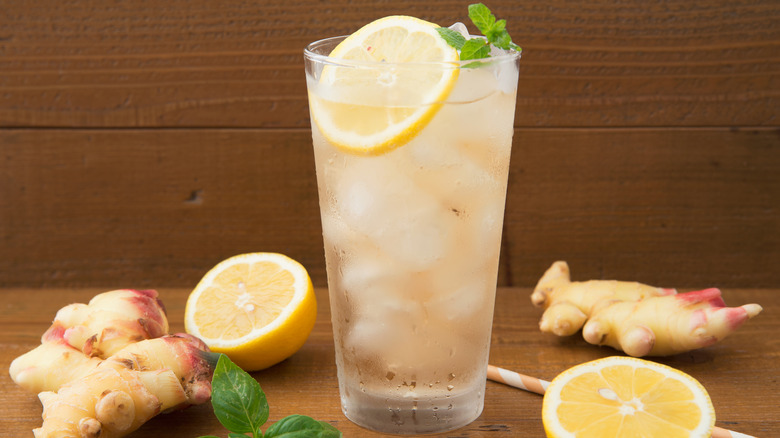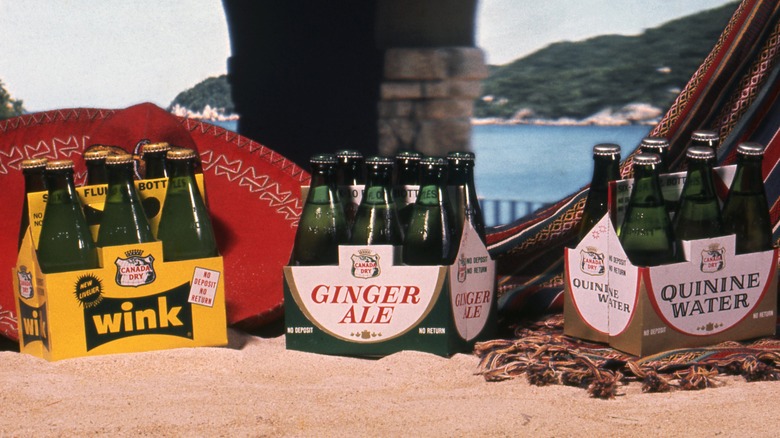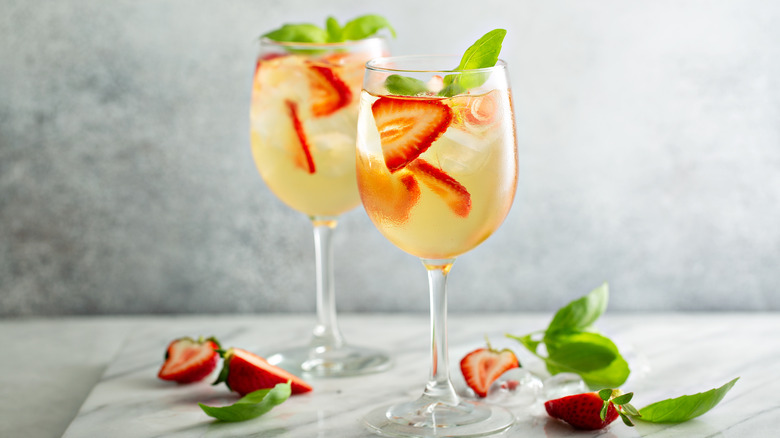What A 'Dry' Ginger Ale Label Means For Its Flavor
The first ginger ale was created in Ireland in 1851, but was widely popularized in the early 1900s by a Canadian company that later came to be known as Canada Dry. While early ginger ales were made using fermentation like ginger beer, they later transitioned to two flavors of soda, where carbon dioxide carbonated water was flavored with a ginger syrup, yielding a milder taste and fizzier mouth feel. Dry ginger ale, also referred to as pale dry, is acidic and more crisp than sweet. The mild taste, light body, and abundant carbonation make for a super refreshing sip. On the other hand, golden ginger ales are on the sweet side, dark in color, and have a strong ginger taste and softer bubbles.
Canada Dry initially offered both golden and dry versions, but dry ginger ale became far more popular, especially when the period of Prohibition began in 1917 in Canada and 1920 in the United States. Consumers were after satisfying mixers that could cover the harshness of bootleg moonshine.
Are dry and golden ginger ales made differently?
Both dry and golden ginger ales can be made by flavoring sparkling water, though golden ginger ales were traditionally made by fermentation. These days, the terms "dry" and "golden" are really marketing terms, and don't necessarily align with how these products were historically made; they are simply indicators of the flavor. In general, "dry" denotes crisp and light ginger ales with abundant bubbles. "Golden" refers to sweeter ginger ales with a rounder taste, deeper ginger spice, and softer carbonation. Depending on the brand, they can both vary in pungency, sweetness, and levels of carbonation.
Pungent ginger ales rely on ginger essential oils and oleoresin, a concentrate derived from the rhizomes of the ginger root. Other brands use artificial ginger flavor or a mix of natural and artificial. It is also common to see additions like fruit juices, spices, citrus, or capsicum for an extra peppery hit.
How to pair dry and golden ginger ale
Like with many drink pairings, it works well to pair similar flavors — dry ginger ale with lighter spirits and flavors and golden ginger ale with darker ones. Golden ginger ales pair well with dark rum in a Dark and Stormy while dry ginger ale would be delicious in a shandy made with a light and crisp lager. Try dry and very fizzy Q Ginger Ale in a Moscow Mule for a bright and complex riff. The acidic lime juice and clean-tasting vodka are enhanced by sharp ginger flavor, coriander, cardamom, chili pepper, orange oil, and rose oil.
Sub seltzer for ginger ale for some serious upgrades to classic sangria and mojitos. Use dry ginger ale for a white sangria and golden ginger ale for a red sangria. For a mojito, keep the traditional muddled mint and lime, but top with either white rum and dry ginger ale or with dark rum and golden ginger ale.
For fun nonalcoholic mimosas, top orange, grapefruit, or cranberry juice with dry ginger ale. Make a refreshing and interesting iced coffee by adding golden ginger ale to cold brew, and garnish with an orange slice.
Ginger ales are versatile and varied, so really, the pairing possibilities are endless. The "dry" and "golden" labels can point you in the right direction depending on your flavor preferences, but every brand uses a different recipe, so it's best (and more fun!) to sample until you find a favorite.



